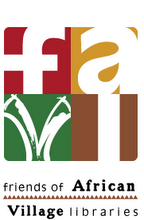1. Pick a single community and tell me a few of the most striking facts about literacy, learning, and access to knowledge and books.
When I first got to know the community in 1997 there were lots of “signs of literacy” in the trading centre – advertisements, signposts, graffiti – but hardly any more substantial reading matter: no bookshop/stationer, no newspapers. In the three primary schools that I visited the teachers all complained that they had no books, though one school said they’d been given a bunch but they’d all been stolen from the school’s store. The reading and writing classes that I observed were based entirely on the blackboard. The one secondary school in the immediate area (Kitengesa Comprehensive Secondary School) was very new at the time and had only half a dozen books or so. I did a survey of the students at this school and of one class at a secondary school a few miles away (St Martin’s Secondary School, Narozali – which did actually have more books, thanks to a recent Rotary Club donation), asking what printed material the students had at home. Most reported some – two or three items – but only one reported as many as ten. The items reported were mainly school textbooks (they were probably stolen from the schools), the occasional Bible, and single issues of newspapers, especially the Luganda paper Bukedde.
2. Tell me about the libraries that have been built in these communities.
The present building (but we’re putting up a new one) is just one room, with solar panels. We have four regular laptops, one XO laptop (of the “One laptop per child” project), and five little keyboards for teaching typing skills (they’re a recent donation). No internet access. The book collection is somewhat over 3000. We do lend books. Last year we had 6099 visits, i.e. an average of 117 per week, but that is probably an underestimate since people often forget to sign the book. These visits are concentrated during school days, because the secondary school students are in and out of the library all the time. Few of them come though during the holidays.
3. What have you observed in terms of change. As in: children and adults are becoming increasingly comfortable with the concept of a library (lending or not).
We have lots of programs and receive significant numbers of outside visitors. A Ugandan NGO called Ka Tutandike sent a troop of primary school teachers to visit last Fall, and a group of 28 people came from Rwanda because they’re interested in setting up community libraries there (I’ve told Betsy about this and hope to meet the leader of the group when I’m in Kigali next week). A number of adults in the village are regular visitors, and primary schools ask to be invited to our Children’s Days. Children are also coming by themselves. We had a Children’s Day on Feb. 21 for a particular school, and last Saturday, when I was there, I saw some children come in from that same school.
4. Do you feel that the introduction of a library to your village has had a positive impact on society, literacy, the economy of the village, or other.
It has encouraged general reading, especially among the secondary school students, and has introduced some of the primary school students to books. Many of the adults have told me that the newspapers enable them to know “what is going on in the country”. It has fostered the growth of a Women’s Group, which has become a microfinance organization. It has attracted the interest of outsiders, especially Canadians associated with the University of British Columbia, which has in turn brought volunteers, and their money, to the village. The school has grown rapidly, which the school’s Director attributes at least in part to the library. But I don’t want to be too starry-eyed about this: there are still plenty of people in the area who never read, and most remain very poor.
Wednesday, March 18, 2009
Subscribe to:
Post Comments (Atom)

No comments:
Post a Comment